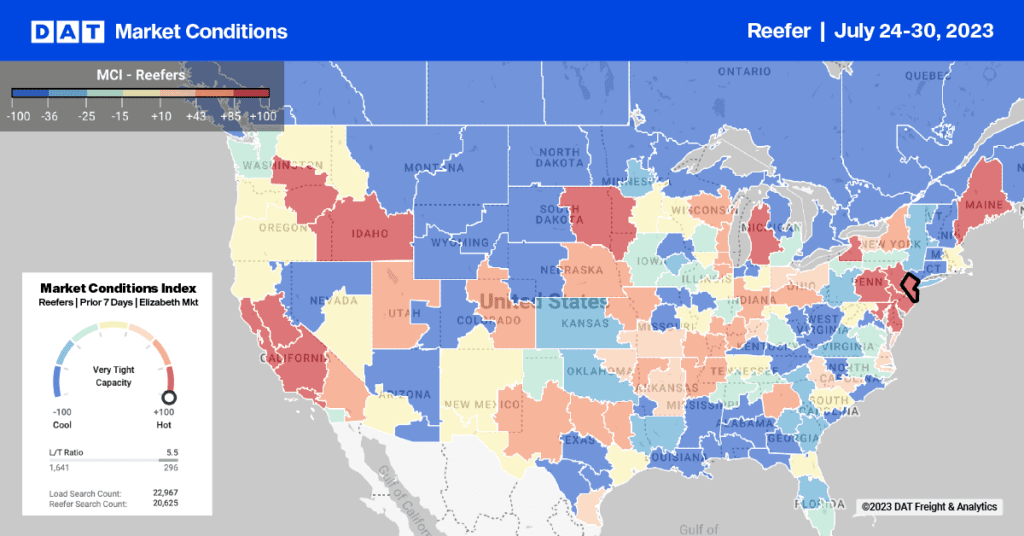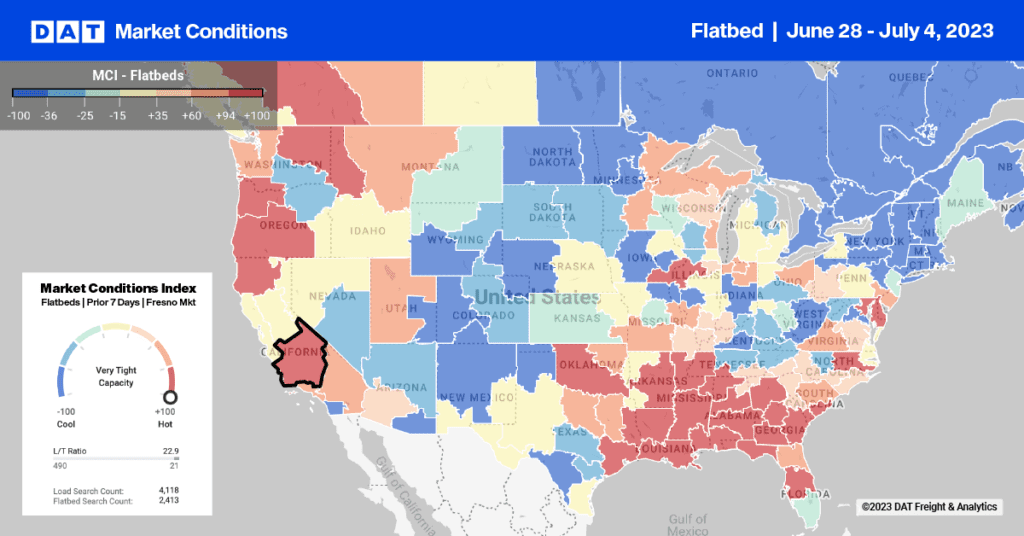Good news for truckers!
Van spot rates rose last week in major markets and reversed a summer long decline. The one-week increase amounted to roughly $0.03 per mile (1.6%) bringing the spot market average to $1.84 across 12 of the top van freight markets nationwide. That rate is just half a cent (0.3%) below the average we recorded on August 31. Driving the increase is additional freight volume as evidenced by a 5.6% increase in load postings last week. Also, fuel prices are starting to decline, which is always good news.
Load Posts and Rates Often Rise As the Quarter Ends
It is not unusual to see a surge in rates at the end of a quarter. Shippers typically rush freight out the door in an effort to close their books on a high note. When the economy is weak, shippers are more cautious about building inventories, so you might not notice the end-of-quarter bounce. On the other hand, when the economy is especially strong, the upward trend can start as much as two weeks in advance of the quarter’s close. Then you wouldn’t see such a big swing in the final week.
Load posts trended up last week for all three major equipment types, and load volume in September was up for vans, both compared to August levels and compared to September 2011, as well. Usually an increase in load posts is paired with a decline in truck posts. When there are “enough” loads in the marketplace, small carriers stop posting trucks and just search for loads. When they post trucks, they get more phone calls than their small office staff can handle. So load posts go up, truck posts go down. And we see an increase in a key spot market demand indicator: the load-to-truck ratio.
Rising Load-to-Truck Ratio Predicts Rate Increase
The load-to-truck ratio is this elegant little number. The van ratio right now is 3.1. That’s the number of load posts divided by the number of truck posts. Nothing complicated. But when the ratio changes over a period of time, we can predict that the next event will be a change in the spot market rate. We saw a pattern of increase in the load-to-truck ratio for vans over the month of September — except for the holiday disruption during the weeks following Labor Day — and the ratio is now stable at 3-to-1 instead of the 2.5-to-1 average we saw in August. Sure enough, spot market rates rose this week.
If this rate increase is sustained, instead of just an end-of-quarter blip, we can expect to see contract rates will rise, as well. I have tracked this trend in individual lanes, as well as the overall average rates, and it is as good a crystal ball as any I’ve encountered in my decades of pricing models. It’s not 100% predictive, because there are other factors that contribute to rate movements, but the sequence is true in more than two-thirds of the cases.
Other Sources Confirm Slow Growth in the Economy
Looking at the economy more broadly, the Institute of Supply Management (ISM) posted its manufacturing index for September. The ISM index, a measure of industrial output, beat expectations and rose to 51.5 in September from 49.6 in August. A reading above 50 is interpreted as economic expansion, while anything below 50 signals contraction, and September’s index exceeded that magic number for the first time since May.
Bottom line: Based on the spot market van numbers, as well as a few other market indicators like the ISM increase, I believe that the U.S. economy is still in a slow growth mode. It’s not strong, but it’s not heading for a second recession either.


